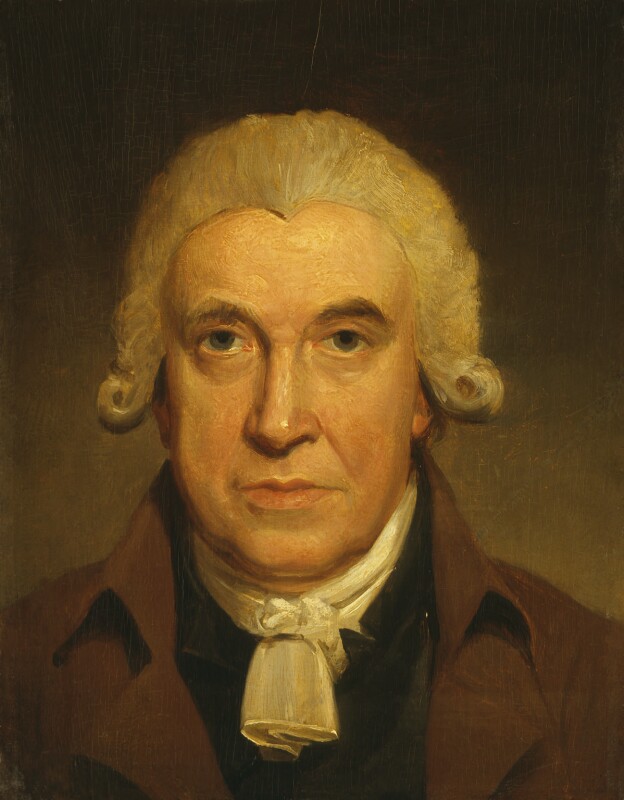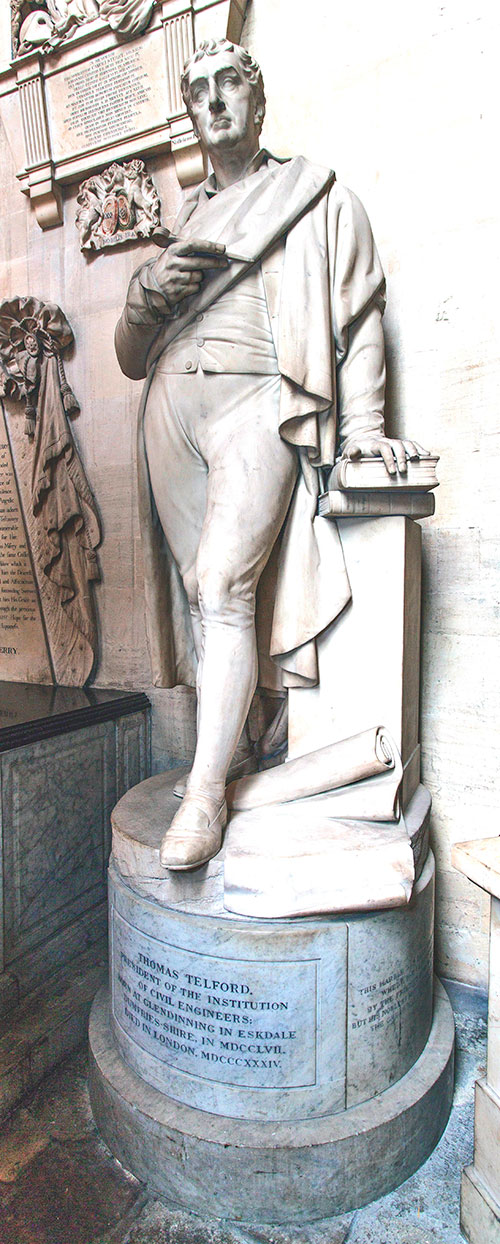James Watt
A very large white marble statue was erected in St Paul's chapel in Westminster Abbey in memory of James Watt (died 1819), the great civil engineer, by the sculptor Sir Francis Chantrey. This cost over £6,000 and the fee was paid to the Abbey in 1825. The introduction of this colossal monument into the little chapel meant that the pedestal had to be divided into three pieces and was dragged in over the medieval tomb of Sir Lewis Robessart, destroying the ancient coffin lid. The statue only just went through the door and the floor gave way under its weight and disclosed "rows upon rows of gilded coffins" beneath. Had the area not been planked over the workmen and the statue would have fallen in. The epitaph was by Lord Brougham and read:
Not to perpetuate a name which must endure while the peaceful arts flourish, but to shew that mankind have learned to know those who best deserve their gratitude. The King, His Ministers, and many of the Nobles and Commoners of the Realm raised this monument to JAMES WATT who, directing the force of an original Genius, early exercised in philosophic research, to the improvement of the Steam Engine, enlarged the resources of his Country, increased the power of Man, and rose to an eminent place among the most illustrious followers of science and the real benefactors of the World. Born at Greenock MDCCXXXVI Died at Heathfield in Staffordshire MDCCCXIX.
Bust
In December 1960 the statue was removed from the Abbey as tastes had changed and it was far too large for its position among mainly Elizabethan monuments. But a bronzed plaster bust was given in its place by the Institution of Mechanical Engineers. The bust stands on the window ledge in the north choir aisle and a memorial stone was inserted in the floor of St Paul's chapel to mark the site of the statue, with the same inscription as above carved on it. The Chantrey statue has been housed at several locations since its removal (Transport Museum, Clapham, St Paul's cathedral and Heriot-Watt university) but is now at the Scottish National Portrait Gallery.
Life and Career
James was born on 19th January 1736 at Greenock in Scotland, the eldest surviving son of James Watt (1698-1782), merchant, and his wife Agnes (Muirhead). His grandfather Thomas (d.1734) was a teacher of mathematics and navigation. James junior was educated locally and went to Glasgow and then to London as a mathematical instrument maker. His interest in steam engines began in about 1759 and he went on to become an eminent engineer, inventor and scientist. In 1764 he married his cousin Margaret Miller (d.1773) and his second marriage was to Anne McGrigor. His son James (1769-1848) also became an engineer but his daughter Janet and son Gregory both died of consumption. He died on 25th August 1819 and is buried at St Mary's church, Handsworth, Birmingham near his business partner Matthew Boulton (a memorial to Boulton was unveiled at the Abbey in October 2014).
Further Reading
For James and his son: Oxford Dictionary of National Biography, 2004
James Watt by A. Carnegie, 2011
Life of James Watt by James P. Muirhead, 1854
A statue by Chantrey is also at St Mary's, Handsworth
And a bust at the Birmingham Museum & Art Gallery

© National Portrait Gallery, London [Creative Commons CC BY-NC-ND 3.0]

This image can be purchased from Westminster Abbey Library
Image © 2024 Dean and Chapter of Westminster

This image can be purchased from Westminster Abbey Library
Image © 2024 Dean and Chapter of Westminster

This image can be purchased from Westminster Abbey Library
Image © 2024 Dean and Chapter of Westminster










